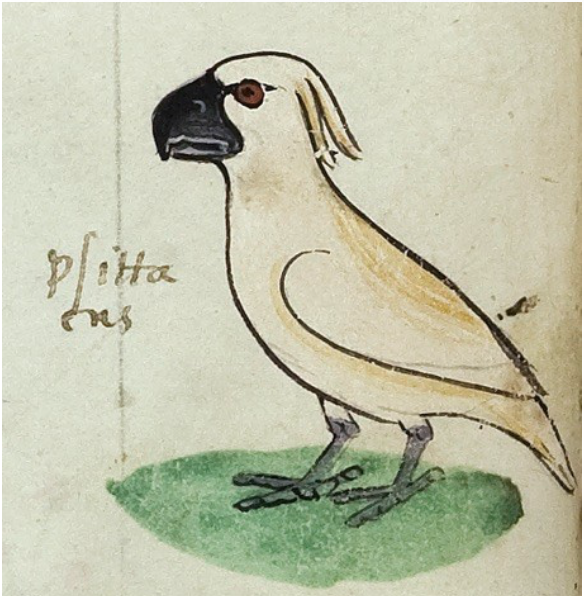Cockatoo discovery reveals flourishing medieval trade routes around Australia’s north

Images of an Australasian cockatoo have been discovered in a manuscript dating from 13th century Sicily, now held in the Vatican library.
This finding reveals that trade in the waters in and around Australia’s north was flourishing as far back as medieval times, linked into sea and overland routes to Indonesia, China, Egypt and beyond into Europe.
The four images of the white cockatoo feature in the Holy Roman Emperor, Frederick II of Sicily’s De Arte Venandi cum Avibus(The Art of Hunting with Birds), which dates from between 1241 and 1248.
These coloured drawings pre-date by 250 years what was previously believed to be the oldest European depiction of a cockatoo, in Andrea Mantegna’s 1496 altarpiece Madonna della Vittoria.
Faculty of Arts School of Historical and Philosophical Studies Honorary Research Fellow Heather Dalton in 2014 published an article about the cockatoo in Mantegna’s 15th century painting.
This article captured the attention of three Finnish scholars at the Finnish Institute in Rome, who were working on De Arte Venandi cum Avibus and who realised they had found much older depictions.
The resulting collaboration between Dr Dalton, Pekka Niemelä (a biologist and environmental scientist at the University of Turku), Jukka Salo (a zoologist and Head of the Sino-Finnish research and conservation program on the Giant Panda) and Simo Örmä (Intendant of the Finnish Institute in Rome) reveals that Frederick’s cockatoo was likely to have been either a female Triton or one of three sub-species of Yellow-crested Cockatoo (also known as Lesser Suphur-crested).
This means the bird originated from Australia’s northern tip, New Guinea or the islands off New Guinea or Indonesia.
Dr Dalton said the Latin text next to one of the images reveals that the cockatoo was a gift from the fourth Ayyubid Sultan of Egypt to Frederick II, who referred to him as the ‘Sultan of Babylon’. She pieced together the journey a cockatoo would have taken from Australasia to Cairo and then on to Sicily – a journey which would have been primarily overland and taken several years.
“Although our part of the world is still considered the very last to have been discovered, this Eurocentric view is increasingly being challenged by finds such as this,” Dr Dalton said.
“Small craft sailed between islands buying and selling fabrics, animal skins and live animals before making for ports in places such as Java, where they sold their wares to Chinese, Arab and Persian merchants.
“The fact that a cockatoo reached Sicily during the 13th century shows that merchants plying their trade to the north of Australia were part of a flourishing network that reached west to the Middle East and beyond.”
Their work is published in the current edition of Parergon Journal 35/1 (June 2018): 35-60.